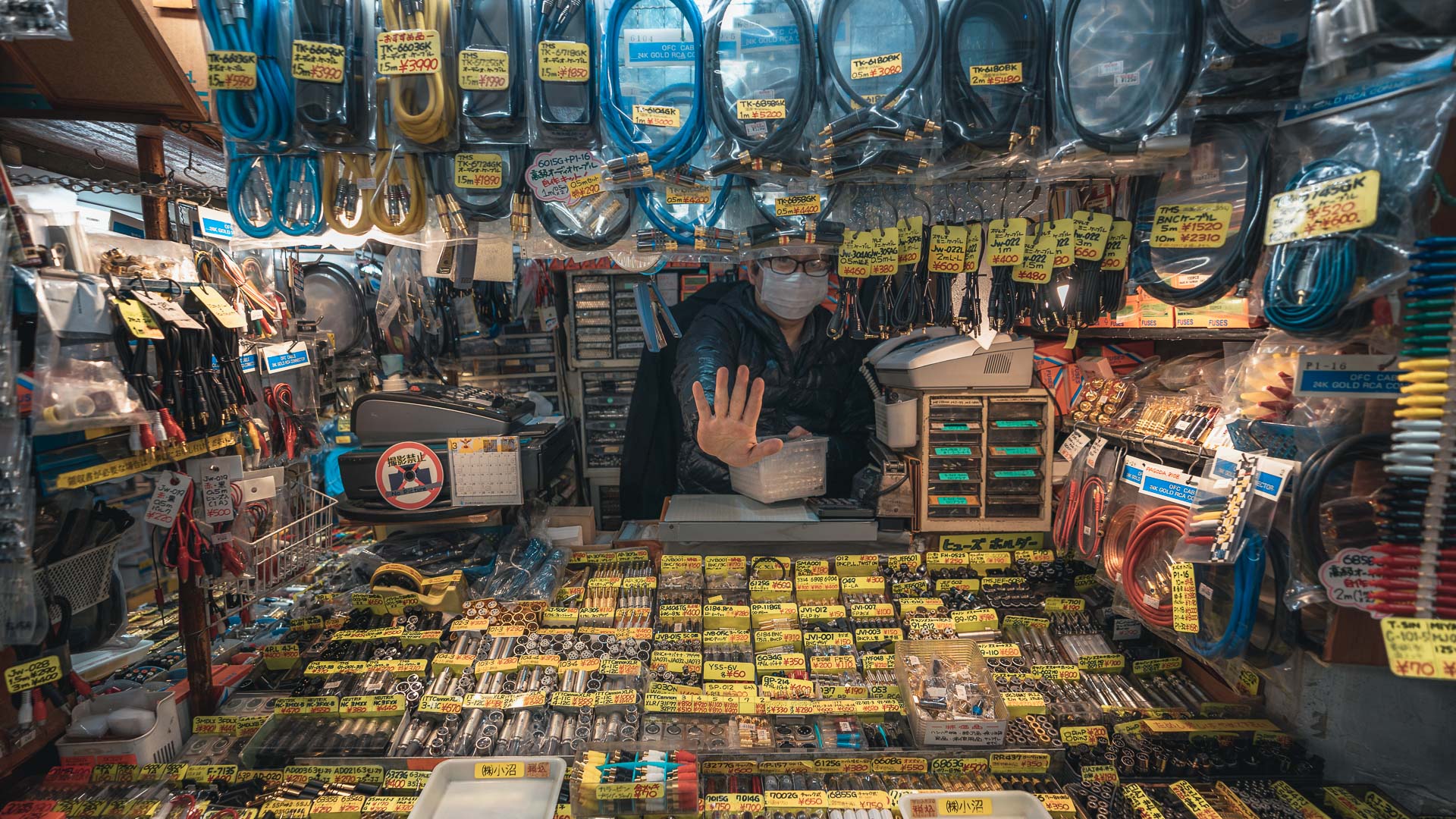Getting close in Street Photography is an essential and rapid way to improve your street images.
War and photojournalist photographer Robert Capa once said “If your pictures aren’t good enough, you’re not close enough”.
And while I don’t fully agree with this, there’s undoubtedly merit and benefit to understanding what he means.
My interpretation of this quote is that when we first start in Street Photography (and even well into becoming good at it), we often find ourselves taking pictures that just aren’t all that interesting.
Everyone, myself included, is guilty of this.
But what this quote recognises is that the closer you get to your subject, the more interesting your images become. The closer you get to your subject, the more involved in the scene you are, the more your subject interacts with your presence (or don’t), the more you’re able to capture certain expressions or behaviours that make the image seem more relatable.
And again, while I agree that there’s definitely merit to this line of thinking, I’m also of the opinion that you can take compelling images at almost any focal length, you just need the practice.
However, if you haven’t spent a significant amount of time getting close in Street Photography, I highly recommend that you do that first; to master that skill, and only then move on to longer focal lengths and begin to understand those and how they affect your Street Photography experience.

The skills developed by getting close in Street Photography
There’s tremendous value in forcing yourself to shoot up close, and there are 5 reasons, in particular, I want to share with you, so let’s dive into those.
1) Becoming comfortable with confrontation
People are always cognisant of someone with a camera. It’s rare that people really like having their photo taken candidly for a myriad of reasons, which is totally fair.
However, Street Photography is legal in most countries (please look up your local laws first) around the world, and the documentation of the human experience is a right that everyone has.
That being said, it’s certainly no less daunting to deliberately take a photo of an unsuspecting stranger when they’re walking by on a sidewalk: seeing an interesting subject, thinking about how you want to photograph them, the mental back and forth battle in your mind about whether you want to raise the camera and snap a photo or not: “is it awkward?”, “what if he gets mad at me?”, “can I do this without him knowing?”, “ahhh this is so awkward”, “is he looking at me?”, “oh no he’s looking at me isn’t he?”, “I can’t do this”, “no, yes I can”, and on and on it goes, a hundred times in a few seconds.
It’s anxiety-inducing and uncomfortable. But that’s what makes it rewarding.
Confronting people is hard. But the skill of getting past your fears is also tremendously rewarding.
It’s a life skill to create an internal toggle of “I don’t give a shit about what other people think of me”; the ability to just turn this on and off at will; to take the shot and deal with the (often zero) repercussions later.
The quote is correct, for the most part; most of the time when you’re shooting up close, your images do indeed become more interesting. They have more life, they have more connection, they have more emotion. And the tradeoff is that a tiny percentage of those images will be of people who aren’t so happy to have their photo taken.
Most of them might give you a look, maybe even a bad one. That’s it, most of the time.
On the odd occasion someone might fire up and ask why you took a photo of them and then ask you to delete it, to which you can say “because you looked really interesting and I love your hat, this is what the photo looks like. I could delete it, or I could even send it to you if you like it”.
That’s it.
When faced with confrontation to this degree, you don’t have to be steadfast, instead just adapt and go with it. If you need to delete a few photos because people got angry, then so be it, do it, and move on to the next subject.
You’ll find that this mentality - the mental fortitude of being able to hold an uncomfortable conversation with someone on the regular - is incredibly liberating. It can have tremendous carry-over into your daily life outside of photography too.

2) Learning to blend in
Another great skill to learn of shooting up close is how to blend in successfully.
It’s the ability to take images of people without being noticed. Sounds kinda creepy, and it kind of is if I’m honest, but it’s a necessary technique to learn if you’re looking for candid and real emotions and reactions.
You can do this in many ways, but my favourites are:
- Wearing all black or something non-flashy
- Walking with the flow of human traffic on sidewalks and streets
- Being still with objects outside of the flow of traffic (like sitting on a bench photographing people that pass by)
- Pretending to be a tourist
- Pretending to take a photo of an object behind the subject I’m actually taking a photo of
- Shooting from the hip without looking
- Shooting while walking (with a fast shutter speed)
All of these little sub-skills allow you to take images up close without people suspecting you’re doing so, leading to compelling compositions and scenarios you wouldn’t find yourself in otherwise.
3) Becoming extremely proficient at your technical skill
Shooting Street Photography up close is in my opinion, the hardest, most technically demanding type of photography you can do; and I’ve tried them all.
Why? Well, you need to master everything; your focus, shutter speed, aperture, subject, composition, lighting. Then, multiply that by the fact that you’re already under pressure being so close to people, your palms are probably sweaty, your blood is rushing, and your heart is probably beating a couple hundred times a minute. Then, multiply that by the fact that sometimes you need to do all of this blind; that is, “no look” shots: shooting from the hip, shooting from the waist, not looking through the viewfinder so that it doesn’t look like you’re taking an image, etc. etc. etc.
The variability in Street Photography is staggering, and by repeatedly shooting up close, all your technical flaws will be revealed. There’s no hiding. When you review your photos, you’ll see your mistakes. Sure you can hide them by saying “oh, that motion blur is artistic”, or “that missed focus subject makes the image more interesting”, but let’s be real here; the only person you’re kidding is yourself.
We’ll dive further into more advanced, technical shooting techniques in a different article, but when you learn about things like zone focusing, the relationship between hyper-focal distancing and depth of field, f8 and be there, and the like, you’ll start to appreciate just how useful having great autofocus is, and then even that has it’s own learning curve to master too.
All this to say that there is a lot of technical craft skills to learn when you’re forced to shoot up close. You’ll discover your weak points much faster doing this than in any other form of photography. Give it a try.

4) Understanding where you draw the line of ethics
Everyone has a different personal line of ethics when it comes to Street Photography; and the longer you do it, the further out your own tolerance will become.
There’s this photographer named Bruce Gilden who carries a flash in one hand, his camera in the other and takes sudden, ruthless, close up (like 30cm away) flash portraits of unsuspecting people just minding their own business.
Imagine just walking on the street, in your own world, and then suddenly you get flashed in the face at point-blank by some dude who quickly walks away like as if nothing happened.
He’s literally the definition of “no fucks given”.
Now, most people’s line of ethics when it comes to Street Photography will be way higher than that, but understanding the line between what’s ethically right on the street and what’s not is for you, a personal journey of discovery. It changes your relationship to how you see and interact with the world around you when you’re out on the street.
I personally draw the line at taking photos of homeless people and anything closer than 1 metre just in general. But I know many people who are much laxer than that.
5) Uncovering what emotions you like to look for in your own photos
When you’re shooting up close, people’s emotions and body language are usually much more authentic and rich; the proximity speaks volumes.
Because of that, you start to discover in yourself the kind of emotions you look for in your own images: what facial expressions, what body language, what kind of expressions you tend to gravitate towards when making your selects and building out your portfolio. It all feeds back into the next time you go out into the field to shoot again.
This all translates really well to other areas of photography like Portraiture too, where rather than discovering these combinations in the wild, you’re directing them consciously, drawing on your bank of previous experience to lead the shoot in front of you. The carry-over is tremendous.
tl;dr
Getting close in Street Photography significantly helps your imagery become more compelling due to the proximity often revealing emotion and body language you usually don’t see otherwise.
In addition, getting close forces you to become good at your technical skills, being comfortable with confrontation, and many other side-benefits that have carry-over into your daily life.
It’s incredibly uncomfortable when first beginning to practice this skill, but over time, it’s also incredibly rewarding and something you should definitely try out.





0 comments